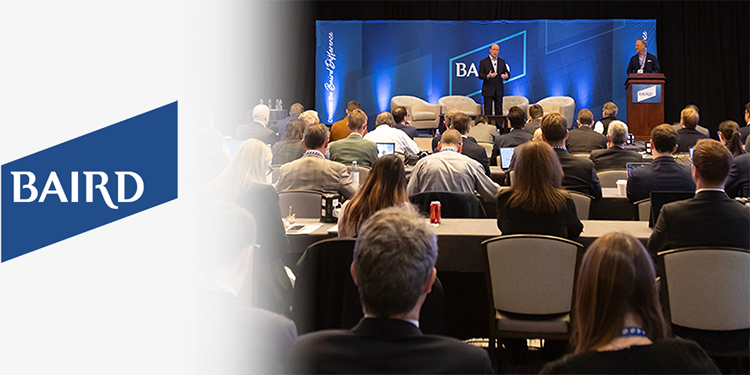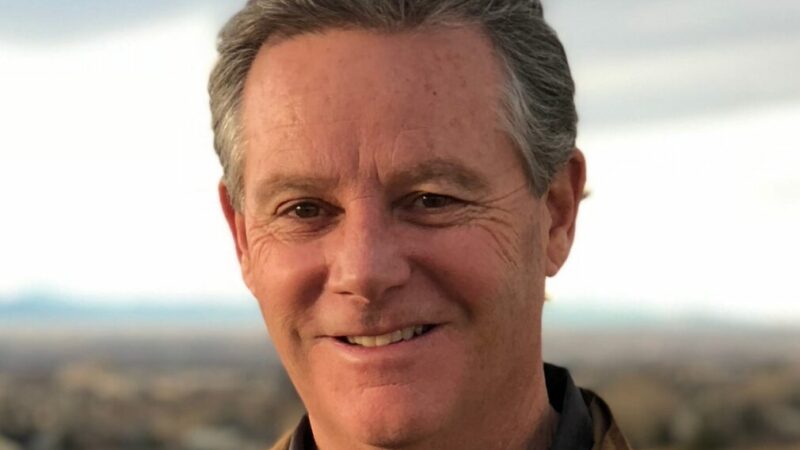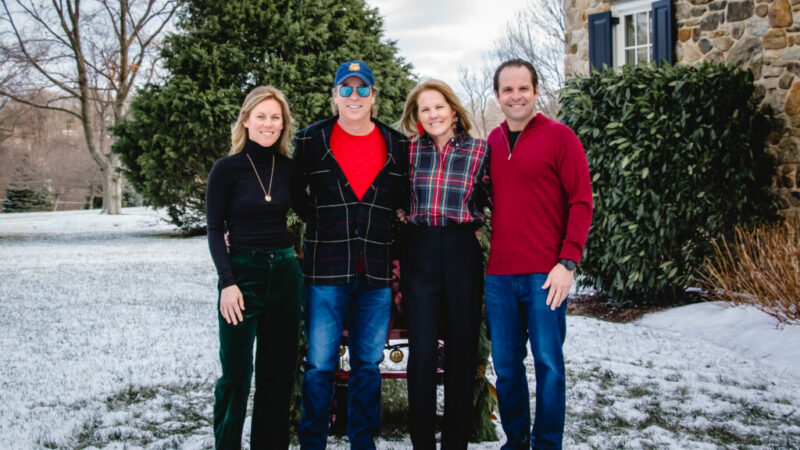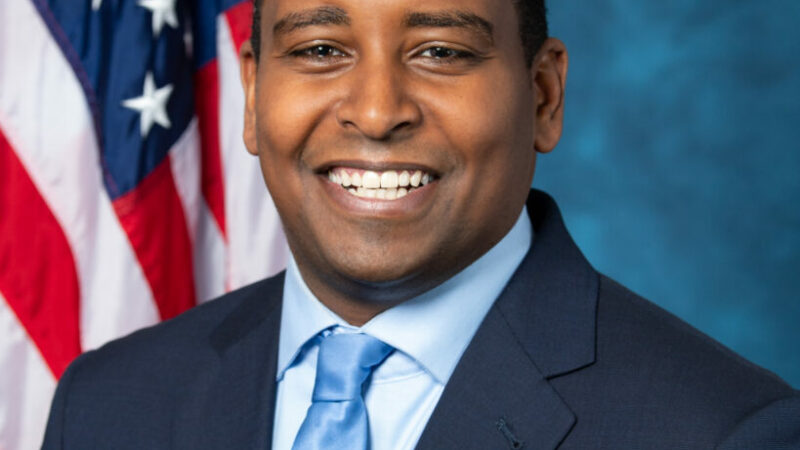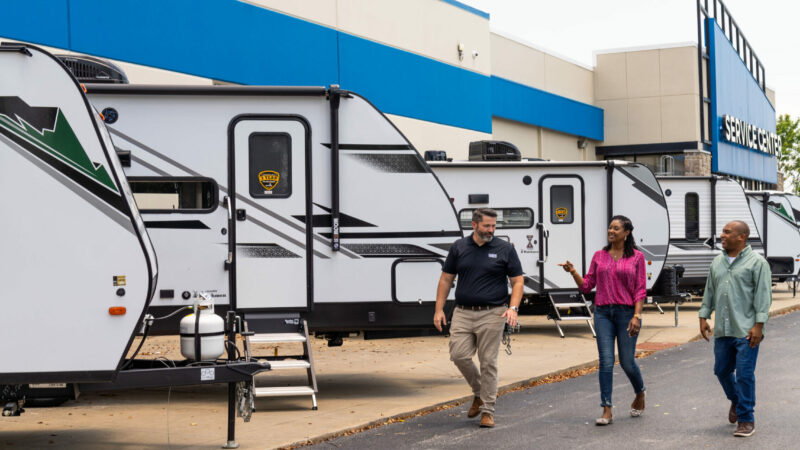Happe: Winnebago Shows Resilience Amid Uncertainties
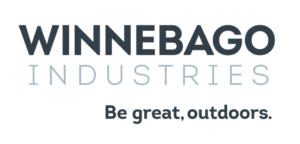 EDEN PRAIRIE, Minn. – Balance, diversification and resilience are traits that have helped steady Winnebago Industries through current economic uncertainty, President and CEO Mike Happe told investors during a March 22 earnings call following release of the company’s second quarter 2023 financial report.
EDEN PRAIRIE, Minn. – Balance, diversification and resilience are traits that have helped steady Winnebago Industries through current economic uncertainty, President and CEO Mike Happe told investors during a March 22 earnings call following release of the company’s second quarter 2023 financial report.
The Eden Prairie, Minn.-based maker of a wide range of outdoor lifestyle products reported continued growth in its marine segment and double-digit margins in all segments amid $886.7 million in Q2 revenue – a decrease of 25.6% compared to $1.2 billion for the same period in fiscal 2022. Second quarter net income was $52.8 million, a decrease of 42.1% compared to $91.2 million in the prior year quarter.
Also on the call were Bryan Hughes, senior VP and CFO; and Ray Posadas, VP of investor relations and market intelligence.
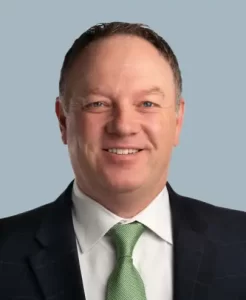
Mike Happe
“Winnebago Industries’ second quarter results continue to demonstrate the resilience of our unique business model in the face of macroeconomic uncertainty and a dynamic outdoor industry environment,” Happe told investors on the call. “We have been focused for some time on a cultural, strategic and financial transformation of the business, with the ultimate objective of building one of the world’s leading and most trusted premium branded outdoor recreation companies.”
He continued, “As evidence of the benefits of a more diversified outdoor portfolio, another strong performance in our marine segment in the second quarter helped to offset a continued softening in consumer demand for recreational vehicles versus the recent cyclical highs. And despite a continuation of many of the same macro dynamics we experienced in the first quarter, including general pressure from moderate inflation, higher interest rates and supply chain inconsistencies, as well as challenging comparisons to the year-ago period of tremendous growth, continuous efforts to improve the efficiency of our operations, reinforced by our commitment to disciplined production and cost management allowed us to sustain competitive double-digit margins across our towable motorhome and marine segments.”
He said that while Winnebago will have to continue to manage through these trends, “I am immensely proud of how our Winnebago Industries team members have risen to the challenge and delivered strong results. Each of our premium brands is engaged daily on the difficult decisions necessary to balance market share and profitability, along with customer and employee relationships.”
He said second quarter results were driven by the strength of the company’s product portfolio, “which continues to resonate with an increasingly diverse population of outdoor lifestyle consumers. We have strong conviction in the ongoing appeal of our premium RV brands, which have maintained net stable market share even as overall RV market demand has softened.”
He said the Barletta aluminum pontoon brand has “achieved extraordinary market share growth, making the marine segment our fastest-growing category with consumers currently. The complementary and steady demand for the iconic Chris-Craft brand in the fiberglass boat category also contributed to the growth of Marine in the quarter. We are extremely proud of the suite of premium products we have in the market today, but we are not content to stand still, continuously investing to develop industry-leading innovation remains a core pillar of our strategy.”
With regard to innovation, specifically, he mentioned:
- The launch of the Chris-Craft Calypso 32
- A new entry-level Aria brand from Barletta
- Grand Design RV’s Imagine AIM travel trailer
- Winnebago’s expansion of mini travel trailers and its Class B line, including a partnership with Adventure Wagon to produce a modular interior platform
- Newmar’s New Aire luxury diesel adding a fourth floor plan and standard lithium-ion battery packages.
- Winnebago and Chris Craft launching all-electric prototypes.
“Looking ahead, we will continue to actively manage and navigate a dynamic demand environment with a focus on profitability through disciplined production and cost management, leveraging our highly variable cost structure and by working closely with our dealer partners,” he said. “We will also continue to capitalize on our strong balance sheet and cash flow generation to make strategic investments in our business and our future, reinforcing our golden threads of quality, innovation and service and ensuring our increasingly diverse portfolio of premium brands continues to resonate with consumers. Winnebago Industries remains well positioned to further strengthen our enterprise capabilities, capitalize on growth opportunities through the cycle and achieve our long-term value creation goals.”
He also noted that the company “successfully navigated the resolution of the 2019 to 2022 model year Sprinter chassis recall by our supplier, Mercedes-Benz as well as other supplier component constraints or quality challenges, resulting in a lower-than-anticipated impact to motorized revenue during the second quarter.”
Following a review of second-quarter results by Hughes, Happe offered closing remarks before taking questions.
“Engagement in the outdoors continues to be extremely healthy during 2023. Consumers, young and old, increasingly diverse and always adventurous are using their RVs and boats or in some cases, rental and/or friends RVs and boats to experience physical and emotional well-being outdoors. Our supplemental slides contain fresh updates on those participation trends.
“As many on this call are aware, the RV Industry Association recently lowered their expectations for calendar 2023 RV shipments to a mid-range of 334,000 units in response to a weakening macroeconomic environment, higher interest rates and an anticipated reduction in consumer discretionary spending.
“While we respect the impact these trends are having on the end market consumer, the outlook we have based on our business plans is a bit more optimistic. Based on what we are seeing in the market, hearing from our dealers and customers, we are currently expecting shipments for calendar 2023 to be in the 340,000- to 345,000-unit range, anticipating the dealer channel to destock about 30,000 to 35,000 units over the 12-month calendar period.
“Of course, there is no clear crystal ball that we nor any of our dealer or supplier friends have, and the ultimate numbers will still be determined by the yet-to-be-seen retail vitality of the spring and summer selling season and the plethora of elements that contribute to consumer confidence. Our investors can rest assured that we run multiple sensitivity scenarios into our operational and financial planning models and are prepared to navigate through anything worse or better. …
“Looking ahead, we are confident that Winnebago Industries is well positioned to maintain and grow market share and further expand the baseline profitability of our business. Each of our fiscal quarters in 2023 or any other year has its own flavor and can be affected by short-term unanticipated challenges. …
“We have the right talent, a diversified portfolio of premium outdoor lifestyle brands, a commitment to innovation and operational excellence, all backed up by a strong financial discipline and a balanced capital allocation strategy. We remain resolute in building a premium outdoor lifestyle company that delivers value to customers and shareholders for the long term.”
Questions from investors on the call:
On what percent of dealer inventory currently is model year ’22 or earlier:
Happe: We are paying very close attention to that subject. Just recently, we conducted an analysis of all of our brands on the RV and marine side and have understood specifically what those numbers are. We’re not going to share that number externally. But we know what that number is. In many of our businesses, we feel very comfortable that the model year ’22 inventory is not unhealthy. … So we do not view model year ’22 inventory for Winnebago Industries as a significant headwind here in the rest of 2023.
On the level of discounting in the towables side of the business and other measures to improve profitability:
Happe: I’ll speak to some of the discounting behavior that we’re seeing, and then Bryan can add some more meat to the bone on the margin side. From a discounting standpoint, we certainly have been seeing dealer promotional activity at retail return here over the last year. So, dealers are certainly operating within the towable segment at a lower gross margin level than they had seen during probably their peak gross margin days in parts of 2021 and early 2022. The dealers have certainly returned to promotionally competing against each other to move product. You have seen that at some of the shows. And, in some cases, you see a graduated level of promotional activity based on the age of that inventory. …
The last form of discounting, I would say, is that as backlogs have retracted and dealers, in some cases, have canceled orders that they had once submitted, we have had in the last six months an elevated level of finished goods, open inventory higher than we’re used to seeing. Consequently, we’ve been obviously working carefully with our dealer partners, especially on the RV brands, to move that inventory in a careful way.
Hughes: I you look at the discounting relative to what we’ve done historically, most notably pre-pandemic; it’s very consistent for Q2. There’s some seasonality, of course, in the business. So, the discounting in Q2 was similar on the motorized side to our pre-pandemic levels. And on the towable side, maybe just a little bit elevated, but less than a point expressed as a percent of sales, just to give you some perspective there. So pretty consistent overall with pre-pandemic activity.
On why motorized revenue declined significantly less than towables:
Happe: The first factor I would say is the faster resolution of the Mercedes safety recall issue allowed us to return to shipping those Mercedes chassis that have been stuck on our lot for many months. No. 2 is our Newmar business has been working for the better part of the last year-and-a-half to have a better cadence of production because of supply chain consistency and refill the dealer channel on the Newmar side. The Newmar business has done an excellent job of doing so in the first two quarters of this fiscal year.
I would say the third element is on the Class C side for Winnebago. We have been seeing some nice retail momentum, particularly on the new EKKO that we introduced to the market about a year ago, as well as our View and Navion products. That’s allowed us to ship some more inventory to the dealers behind those strong retail sales in order to make sure that they continue to have enough on those particular brands.
You are also seeing the benefit dollar-wise of some of the year-over-year pricing actions that we had taken in previous quarters. We did not raise price significantly in Q2 on our motorized product, but the year-over-year comp is definitely being aided by some of the prior price increases we took when inflation was at a more elevated level.
On the timeline for working through clearing out 2022 models and dealers going back to ordering products:
Happe: Well, dealers do continue to order products currently. Certainly the rate is reduced compared to those peak pandemic frenetic retail days.
The timing question is very difficult to answer because it really all depends on retail. We continue to monitor retail on a weekly basis in our business. Certainly, dealer ordering patterns will be a combination of the seasonal retail activity that we see here in the late spring to summer months – in addition to some of the de-stocking levels that they’re looking to achieve over the course of this calendar year.
As I stated previously, we will stay disciplined to not introduce model year ’24 product until later this summer, and that should allow us a good chunk of the late spring and early to mid-summer to try to focus on those model year ’22 products. But we cannot and will not prognosticate on exactly when retail will pivot in a way to reignite dealer orders to a higher level. That is difficult to forecast, and we just need to remain extremely agile on – literally – a weekly basis to react to what the market and the dealers are telling us.
On wholesale and retail balance:
Happe: Our last formal comment on industry shipment and retail levels was all the way back in mid-December. And here we are in late March. And so a lot has changed since mid-December. And that’s why you’ve seen not only the RV Industry Association, but almost every other one of our OEM or supplier peers lowered their forecast as well on industry volume in 2023. So we just continue to be more enlightened by the reality of market conditions and what our dealers are telling us in terms of desired turn levels going forward. …
On dealer inventory levels in lieu of elevated interest rates:
Hughes: Dealers are trying to answer what the right inventory levels are as well. I think dealers are still primarily focused on having the right level of and mix of inventory on their lots to optimize whatever retail is available to them. But I think the question also infers that the cost of carrying that inventory is higher to them as well – which we certainly, certainly acknowledge. That’s one of the reasons why you’re seeing dealers be very serious and proactive here with addressing their model year ’22 inventory as quickly as they can. …
On the momentum of consumer interest in electric vehicles:
Happe: In January of 2022, we introduced the eRV1, which was the concept vehicle, and we saw great reaction to that now about 15 months ago. In January of 2023, we introduced a prototype version of that, the eRV2. We currently have probably around 10 to 12 vehicles that are being used in the market today by different stakeholders that we trust, and they are using the product to give us real-world feedback as to how it operates. Certainly, such metrics as mileage travel range, off-the-grid capabilities in terms of duration of the batteries there, we continue to get that feedback – along with internal engineering and manufacturing development work continued to progress towards a possible launch of that vehicle.
Consumer interest in the eRV2 has been what we would characterize as very strong, and we can capture a lot of that interest digitally in ways that our marketing team on the Winnebago brand is using to both measure but also capture that interest. But, yes, we believe that the adoption of electric vehicle technology in passenger cars in last-mile delivery is only going to help the RV consumer consider that technology credible.
Our focus when introducing, ultimately someday, an electric RV van to the market is that the consumer experience is enhanced and not degraded. So, we will come to market when we feel that we can provide a consumer experience on an electric RV that meets the reputation and standard that is associated with our Winnebago brand. We feel good about our progress – and it’s not about being first. It’s about ultimately being best in terms of what we bring to the market, and that’s been our focus.
On potential damage to the company’s top line as backlogs decrease.
Happe: We’re acutely aware of the backlog. And we have confidence that, ultimately, the dealers will place orders when they think it’s right for their business. We really do not want to operate a business that is excessively pushing inventory into the market. We’ve been very intentional – and even vocal – that a high percentage of the time, we run a production planning process across our businesses where almost every unit on the line has either a dealer name or a customer name. …
What we can control most of the time … is the profitability of the business. We are willing to give a little bit of market share up at times in order to maintain a profitable, healthy business. We’re not going to chase every last wholesale unit or every last retail unit if it means we have to cut our profitability in half, for example. So, it is a balance between the top line and the bottom line. But we’re very pleased with our Q2 results. I think we’re especially pleased to demonstrate that the profitability of the business is, as we’ve been stating, structurally present. And I think that’s what we’ll continue to focus on most in Q3 and Q4 is the profitability of the business and the top line will be a little bit more out of our control, depending on market conditions.
Source: https://rvbusiness.com/happe-winnebago-shows-resilience-amid-uncertainties/
